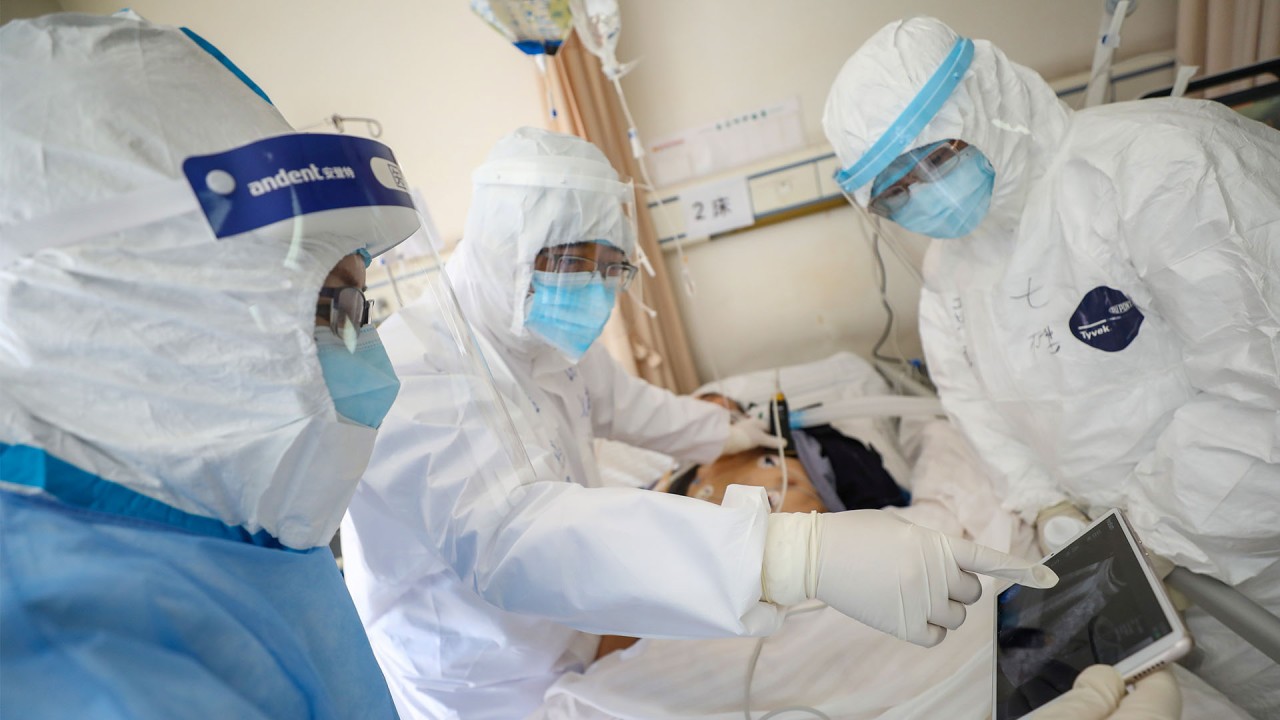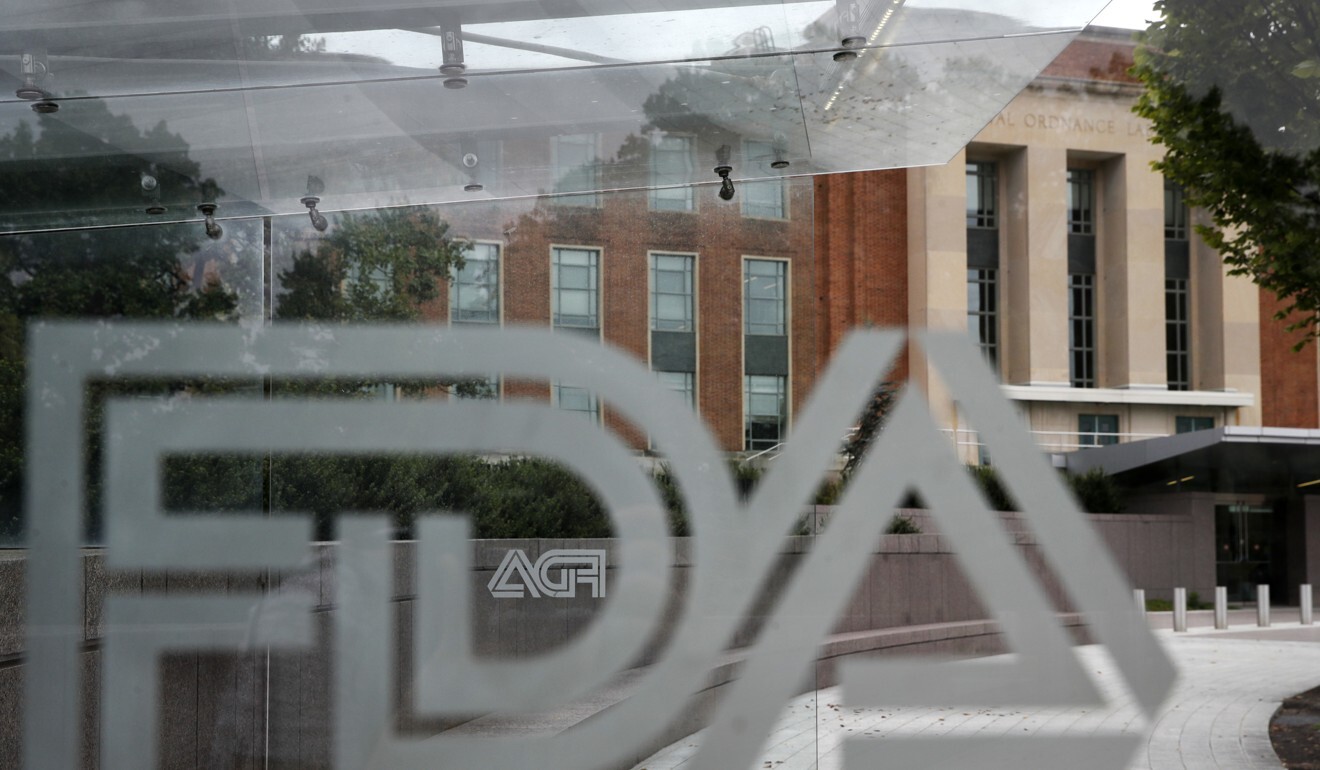
Coronavirus: FDA authorises plasma treatment over scientists’ objections
- Trump unveils approval during press conference with HHS Secretary Alex Azar and FDA Commissioner Stephen Hahn
- President had accused FDA of slow-walking the therapy to harm his re-election chances, without offering any evidence

This story is published in a content partnership with POLITICO. It was originally reported by Zachary Brenann and Sarah Owermohle on politico.com on August 23, 2020.
The US Food and Drug Administration has issued an emergency authorisation for blood plasma as a coronavirus treatment, the agency and President Donald Trump announced on Sunday – one day after Trump attacked the drug regulator for moving too slowly to back the treatment.
The agency held off on the decision last week over concerns from government scientists that evidence for the treatment's effectiveness is thin, prompting Trump to accuse the FDA of slow-walking the therapy to harm his re-election chances without offering any evidence to support his claim.
It is not clear whether the FDA has received additional clinical trial data in the last week that would support the therapy's use.

An emergency authorisation normally paves the way for expanded use of an experimental therapy. But FDA's decision for so-called convalescent plasma – which more than 70,000 Americans have already received – is limited because patients have largely received it outside randomised, controlled clinical trials that could prove whether the approach is effective.
Trump in a brief Sunday evening news conference appeared to oversell the FDA's assessment, claiming the agency found plasma “safe and very effective”. However, the agency said more rigorous study is needed to prove whether the treatment effective.
Janet Woodcock, the head of FDA's drug division who is now working on Operation Warp Speed, an inter-agency effort to accelerate coronavirus treatments and vaccines, on Friday told POLITICO that plasma has not been “proven as an effective treatment”.
And unlike Gilead's remdesivir, which received an emergency use authorisation months ago and has shown to benefit hospitalised patients, convalescent plasma “does not yet represent a new standard of care based on the current available evidence”, FDA said in a statement.
Trump announced the emergency authorisation alongside his health secretary, Alex Azar, and FDA Commissioner Stephen Hahn, in a press conference one day before the start of the Republican National Convention. While Trump called it a “historic announcement”, experts have said the treatment is unlikely to be a game-changer in the fight against a pathogen that has killed more than 170,000 in the United States.
Hahn, who took over as FDA chief in December, said Trump “has asked FDA to cut back red tape and try to speed medical products into the hands of providers, patients and American consumers”.
Outside experts and former officials have accused FDA of caving to White House pressure during the pandemic – most notably in its decision to authorise emergency use of hydroxychloroquine for treating Covid-19 infection despite limited evidence.
The agency later pulled the authorisation after randomised clinical trials found it provided no benefit, but Trump as recently as this weekend complained about the agency's reversal.

03:09
China urges recovered patients to donate plasma as Covid-19 death toll rises above 2,000
Plasma therapy involves giving the sick antibody-rich plasma extracted from the blood of coronavirus survivors. In theory those antibodies should help recipients fight off the virus.
But while plasma treatment has been used safely against diseases from diphtheria to Ebola over the past 130 years, its track record on effectiveness is mixed. And it has not yet been proven to work against the coronavirus.
Scott Gottlieb, Trump's first FDA commissioner, on Sunday said that plasma is “probably beneficial” for coronavirus patients, as he also acknowledged scientists' concerns about the lack of evidence for the treatment.
“I think some people wanted to see more rigorous data to ground that decision,” Gottlieb said on CBS's Face the Nation.
Until now, most Covid-19 patients who have received plasma have got it through an expanded-use programme the FDA set up with the Mayo Clinic.
An analysis of data on more than 35,000 patients enrolled in the Mayo Clinic programme examined how they fared a month after receiving plasma. It found that a smaller proportion (21.6 per cent) of patients who were given the treatment within three days of diagnosis died compared to people who received the treatment later in the course of their disease (26.7 per cent).
But the study, published on August 12 but not peer-reviewed, did not include a control group that would have allowed the researchers to determine whether the plasma treatment reduced the risk of death when compared to standard care.
A study by researchers at Houston Methodist hospitals reached similar conclusions. The 136 patients who received plasma were more likely to have survived a month post-diagnosis compared to 251 patients who did not get the treatment. The effect was strongest in people who were given plasma within three days of hospital admission.

But the study, published on August 10 in the American Journal of Pathology, was not randomised or controlled. The doctors running the study gave every enrolled patient plasma, and later compared their outcomes to other people treated at the hospital.
It is not clear when definitive evidence on plasma's effectiveness will emerge. Operation Warp Speed’s Woodcock told an NIH scientific summit on Thursday that 162 convalescent plasma studies are under way, but only six could produce the type of data needed to support an emergency authorisation or approval from the FDA.
Despite the lack of definitive evidence that the treatment is effective, Trump and members of his coronavirus task force launched a campaign in July urging Covid-19 survivors to donate their blood plasma to help stem the pandemic.
HHS had spent almost US$200 million as of July 9 to acquire the plasma of coronavirus survivors from vendors such as the non-profit America's Blood Centres. The government has also given the American Red Cross almost US$70 million to coordinate the collection of convalescent plasma.
The FDA made the right move to authorise expanded use of the plasma treatment, said Jeffrey Henderson, an infectious disease doctor at Washington University in St Louis. Even though it is not clear the treatment is effective, he said, there is ample evidence that it is safe.
But other outside experts – including at least four former FDA chiefs – have urged the agency to hold off an emergency authorisation until there is clear data that plasma works.
“Let's get the trials done & if the results are life saving, let's make it standard of care, thus benefiting hundreds of thousands to millions,” former FDA Commissioner Robert Califf tweeted this week. “If not we can avoid the huge expense & effort & keep looking for best treatments.”
Adam Cancryn, and Dan Diamond contributed to this story.